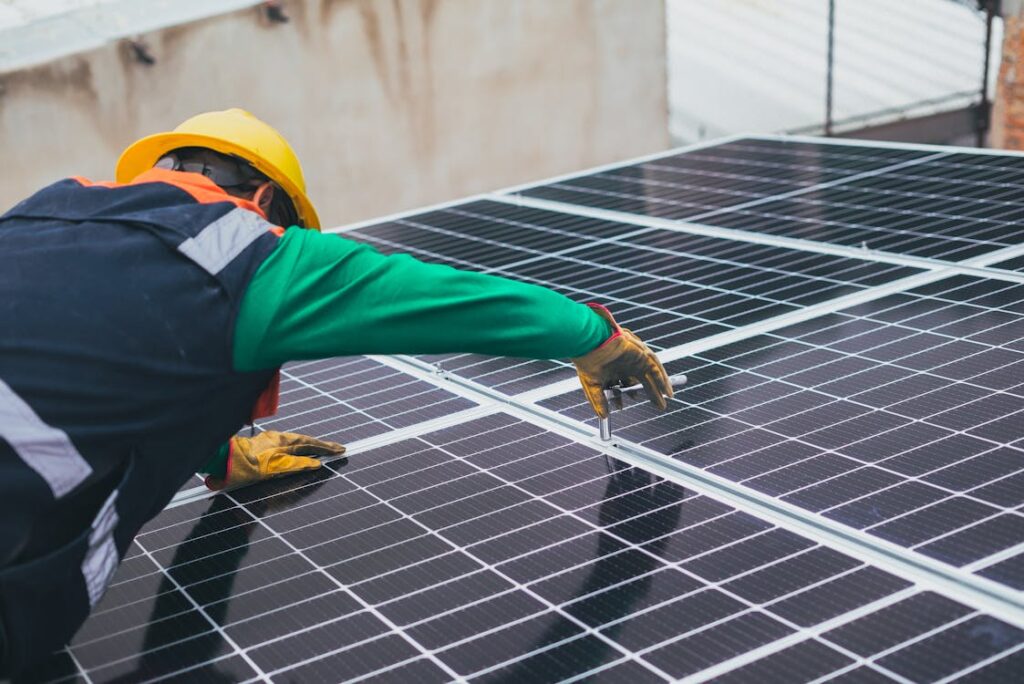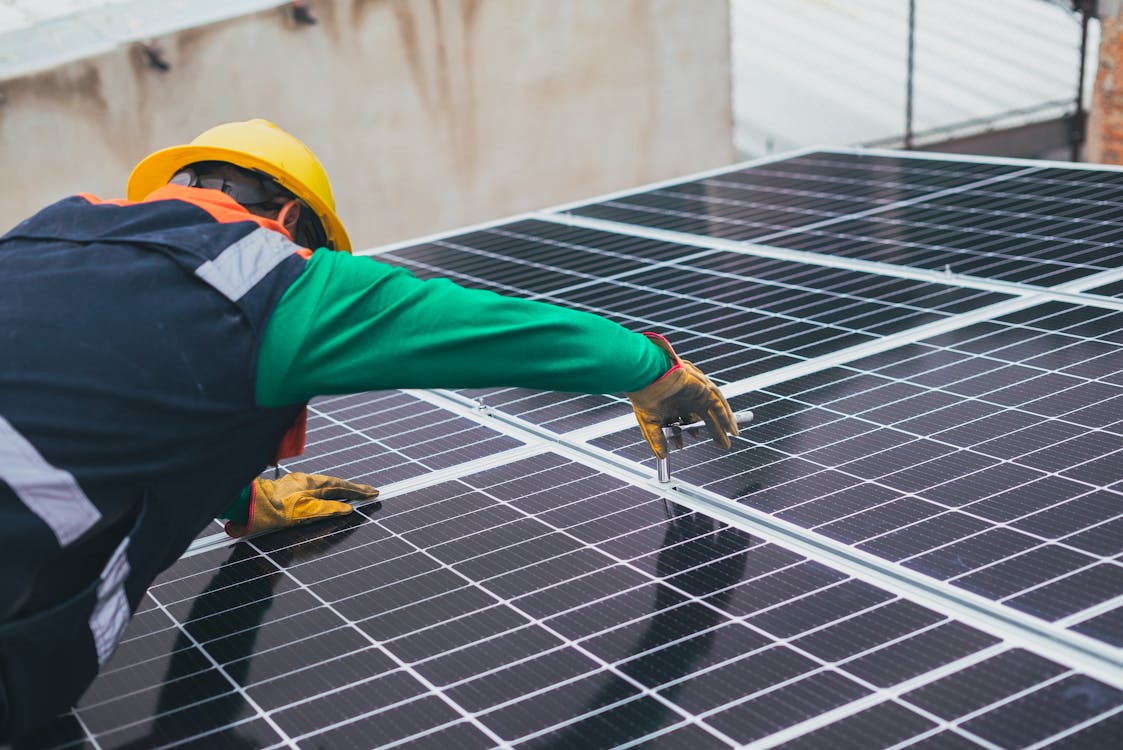
The Future of Alternative Energy in Homes
The future of energy consumption in American homes is poised for a transformation. The use of alternative energy sources is becoming more commonplace, as homeowners seek to lessen their reliance on traditional power grids. With the rise in environmental awareness and advancements in technology, a movement towards renewable energy is not only desirable but swiftly becoming achievable. As we gaze ahead, the role of alternative energy in residential settings is set to redefine the very construct of “home energy.”
Solar Power: Harnessing the Sun’s Potential

Image credit pexels.com
Solar power, once perceived as a futuristic dream, is now a practical solution for household energy needs. Thanks to falling costs and improved technology, photovoltaic panels are now a viable option for many homeowners. The transformation of rooftops into mini power stations is underway, allowing families to harness sunlight to power everyday needs. This not only reduces electricity bills but also decreases reliance on non-renewable sources.
As battery storage options improve, the ability to store solar energy for overnight usage will elevate solar power from a daytime supplement to a comprehensive solution. For this reason, the adoption of solar power is expected to increase dramatically in the coming years, reshaping residential energy consumption patterns. Moreover, some neighborhoods are witnessing the development of community solar programs, a model that allows homeowners to share the benefits of a single solar installation. Such initiatives are fostering community engagement while offering sustainable energy solutions for those who can’t install panels directly on their rooftops.
The scalability of solar technology continues to improve, with new advancements enabling more seamless integration with other home systems. Smart solar solutions combined with home automation promise to make solar energy even more accessible and user-friendly. By syncing solar systems with energy-efficient appliances and monitoring tools, households can better manage their energy through real-time insights and patterns. This connection empowers homeowners to optimize their energy usage, further capitalizing on the potential savings provided by solar power.
For homeowners curious about evaluating cost-effective energy plans and ensuring a seamless transition to alternative sources, exploring options for cheap electricity in Dallas might offer valuable insights. Such explorations can present opportunities for managing hybrid systems, particularly in areas where traditional and alternative energy sources can be optimally balanced.
Wind Power: Catching the Breeze
Wind power is traditionally harnessed on a larger scale through sprawling wind farms. However, smaller systems now designed for individual home use are making their way into the suburban market. Homeowners in areas with consistent wind patterns are discovering the practicality of small wind turbines.
These devices offer a promising future in geographically suitable locations, turning breezy conditions into an asset rather than a nuisance. While initial expenses can be daunting, state incentives and potential energy savings over time make this an attractive possibility for those seeking sustainability. Furthermore, advances in wind turbine technology have led to quieter, more efficient designs, making them a viable option even in suburban areas where noise levels can be a concern. As these systems become more refined and affordable, more residential properties might take advantage of what the wind has to offer.
Geothermal: Tapping into Earth’s Warmth
Yet another alternative, geothermal energy, remains somewhat of an underdog compared to solar or wind. It involves utilizing the Earth’s natural heat as a consistent and reliable source of power. While the installation process can be labor-intensive and costly, its benefits are undeniable.
Geothermal energy facilitates efficient heating and cooling for homes, representing a cost-effective solution over the long term without the fluctuations in availability that affect solar and wind. As technological advancements continue, reducing upfront costs, geothermal energy might receive its due recognition and wider adoption in the near future. Additionally, geothermal systems require minimal maintenance once installed, a trait that enhances their attractiveness. As awareness grows about its long-term benefits, increased investment in geothermal research could yield breakthroughs that further reduce these systems’ barriers to entry.
Hydropower: Flowing into Homes
Although often associated with large-scale hydroelectric dams, the concept of micro-hydro systems could change residential consumption. Homes situated near small water sources can exploit continuous water flow for power. Even minimal water currents can be substantial enough to provide a dependable energy source.
With potential reduced by geographical limitations, widespread application of micro-hydro systems may remain limited. Yet, for those with access, it represents an efficient and consistent energy solution. The integration of micro-hydro systems in eco-friendly building designs has piqued interest within communities looking to maximize local resources. As these small-scale systems become more streamlined and popular, sharing success stories could cultivate interest in regions previously skeptical of hydropower’s domestic viability.
The Road Ahead
As concerns about climate change and energy security grow, the integration of alternative energy within homes will likely see an upswing. Innovations in energy storage, like improvements in battery technology, play a significant role in ensuring that renewable sources become a steadfast staple of home energy solutions. Lowering costs, combined with government support and incentives, makes switching to alternative energy sources palatable for many homeowners.
Looking ahead, the ultimate resilience of homes will depend on their ability to harness and utilize a mix of energy solutions, ensuring energy security and environmental responsibility. The potential for homes to become self-sufficient energy producers underscores a profound shift in how society perceives residential energy use. With ongoing education and encouragement, more individuals will understand the importance of diversifying their energy portfolios, emphasizing the collective effort required to contribute meaningfully to a sustainable future.
As John F. Kennedy once stated, “Our problems are man-made—therefore, they can be solved by man.” Adopting alternative energy solutions is a step toward solving the problem of climate change and ensuring a sustainable future for generations to come.
